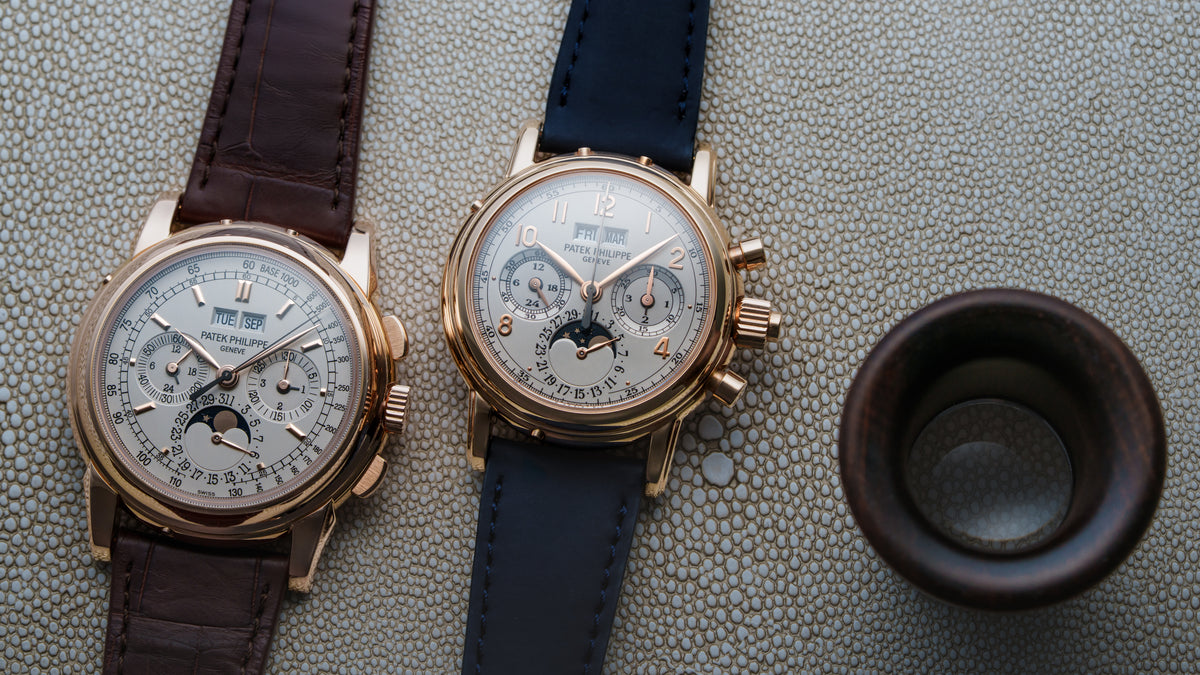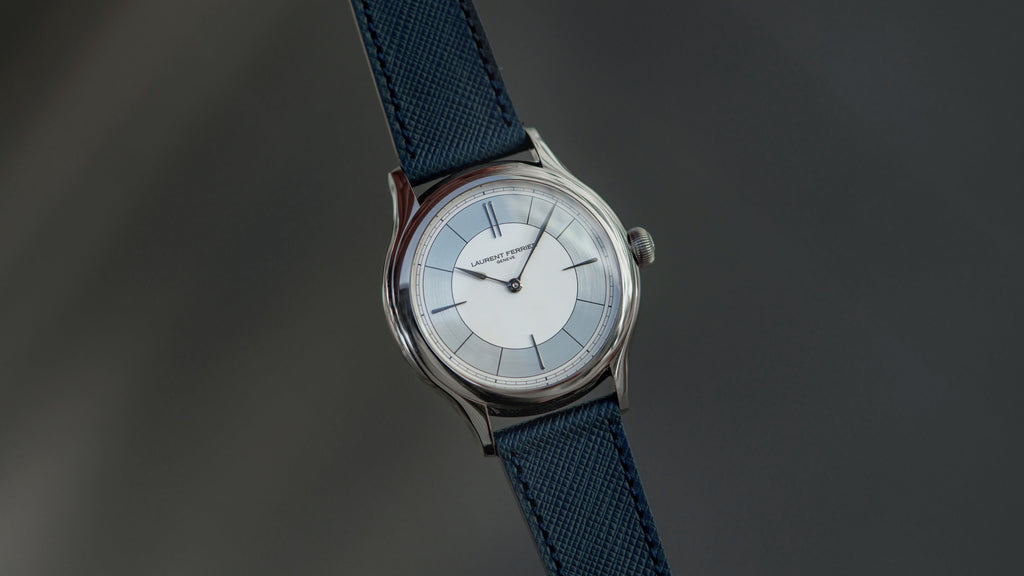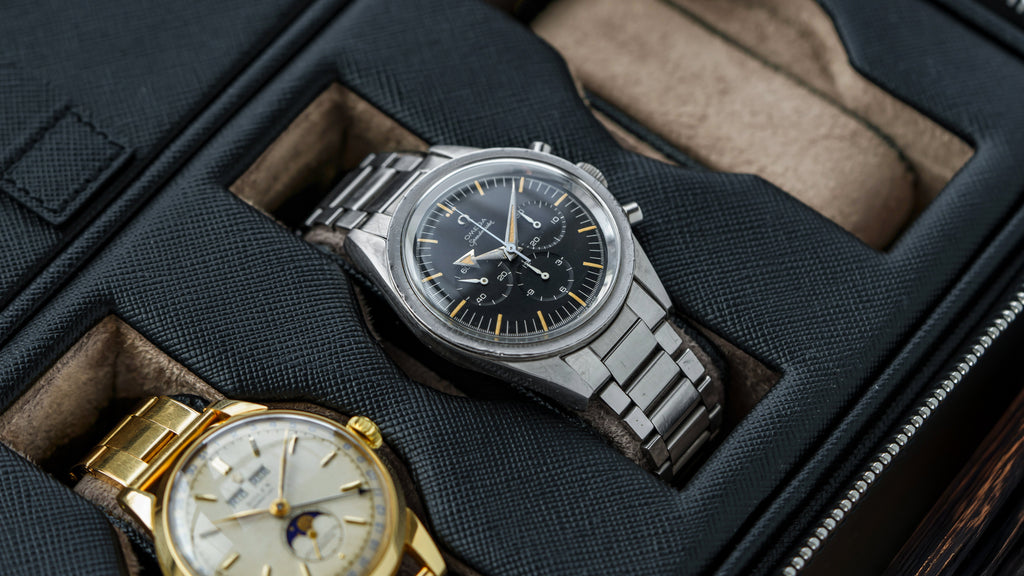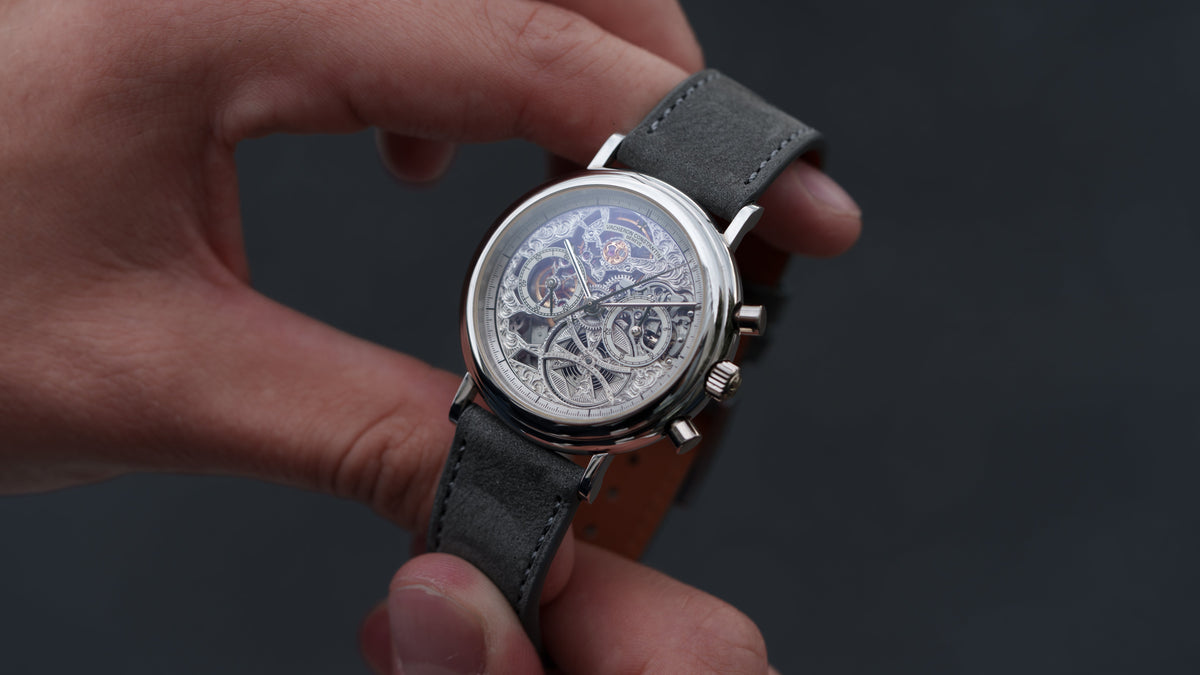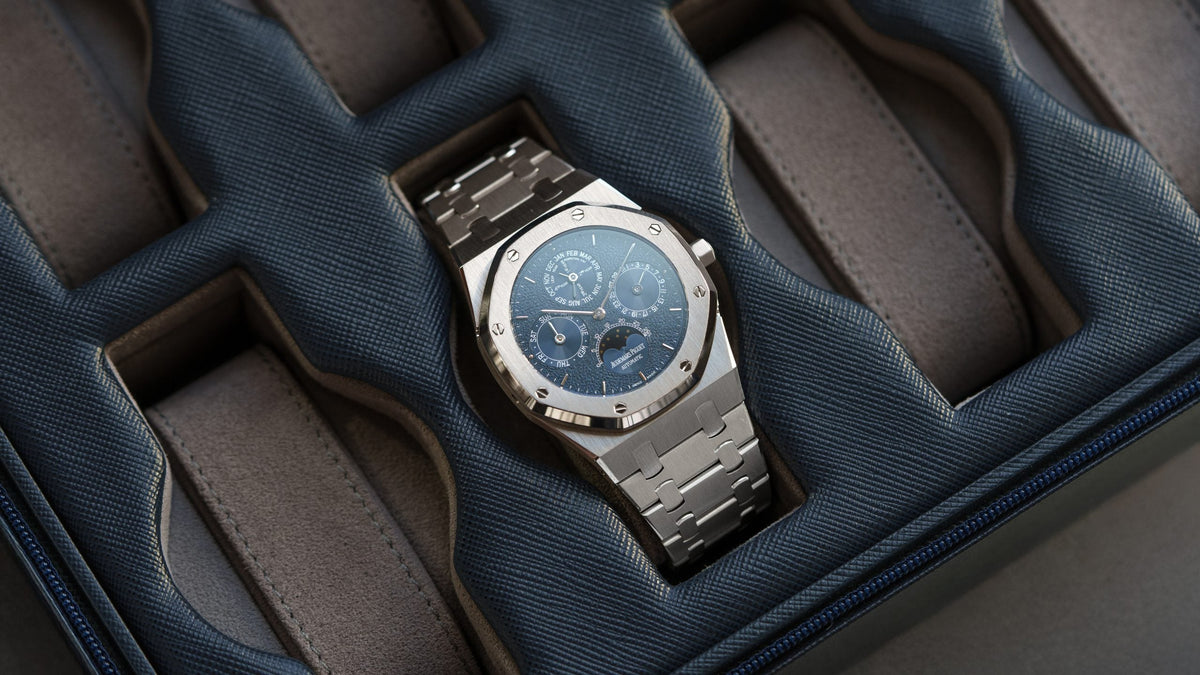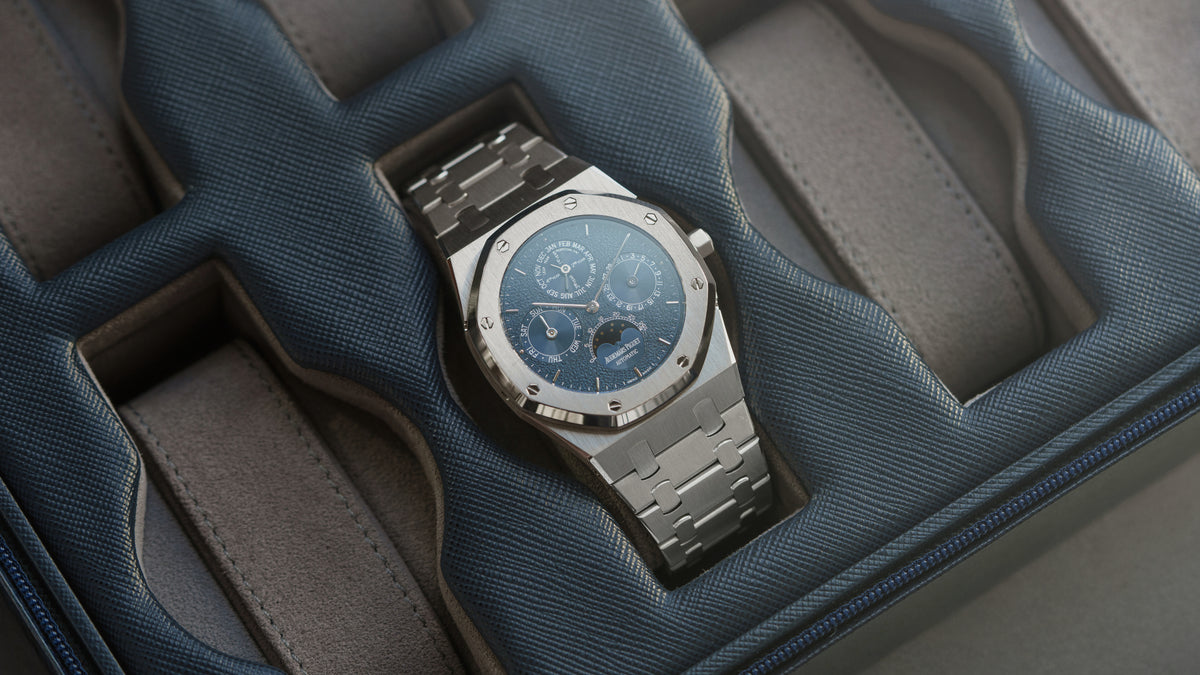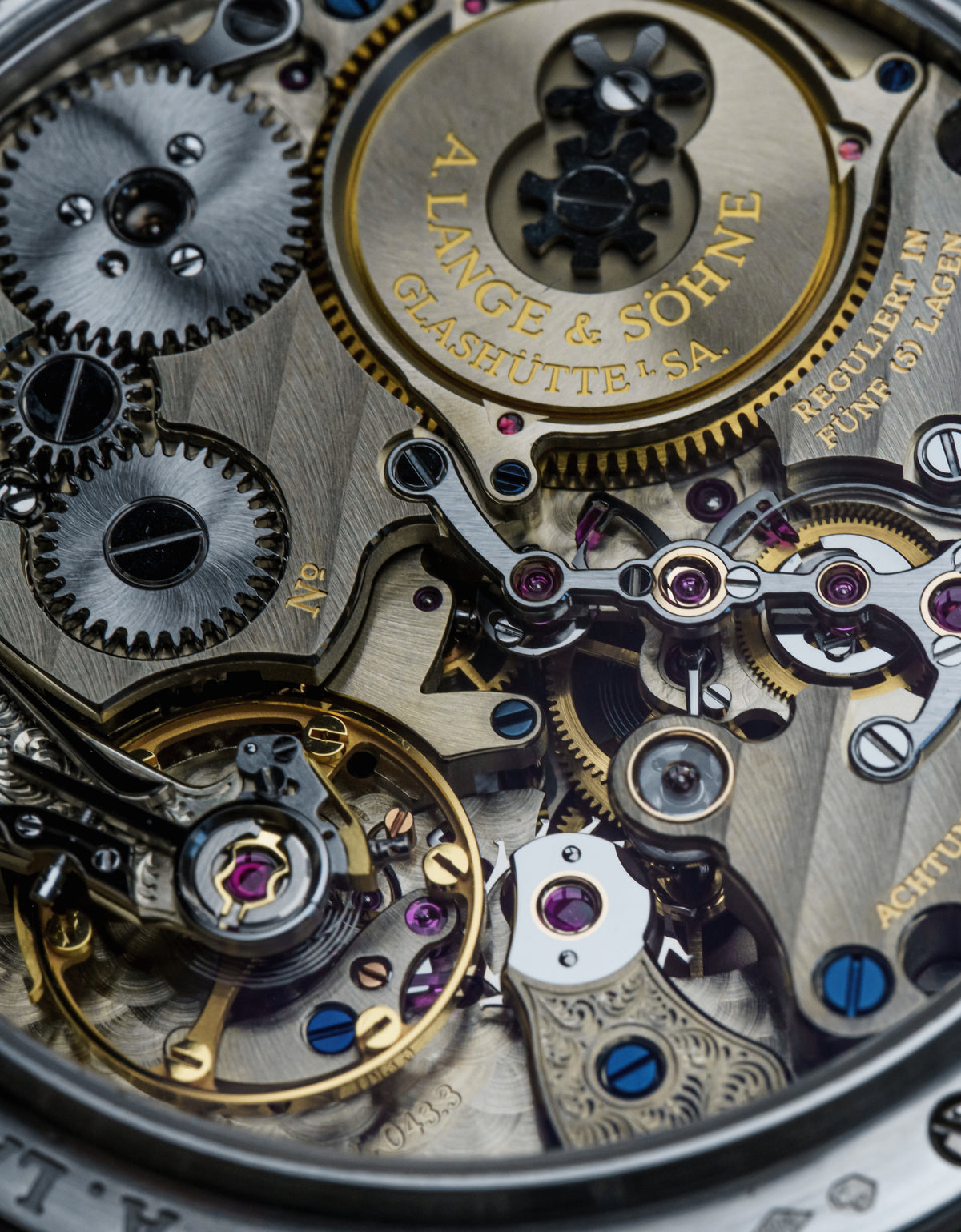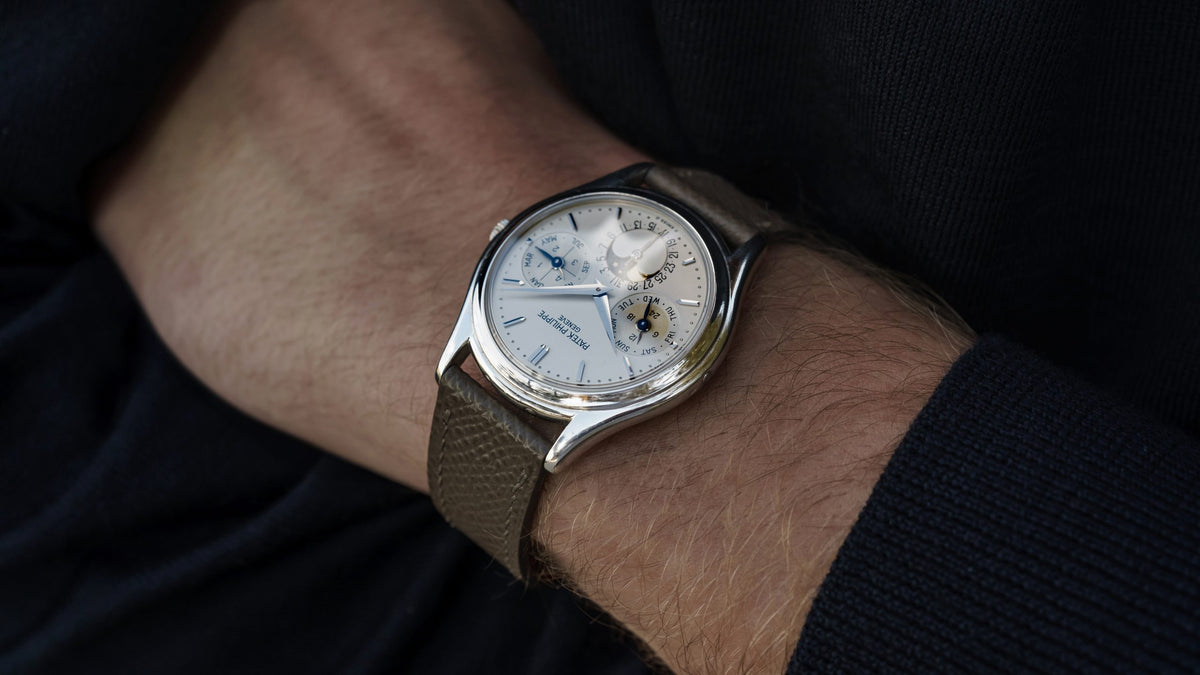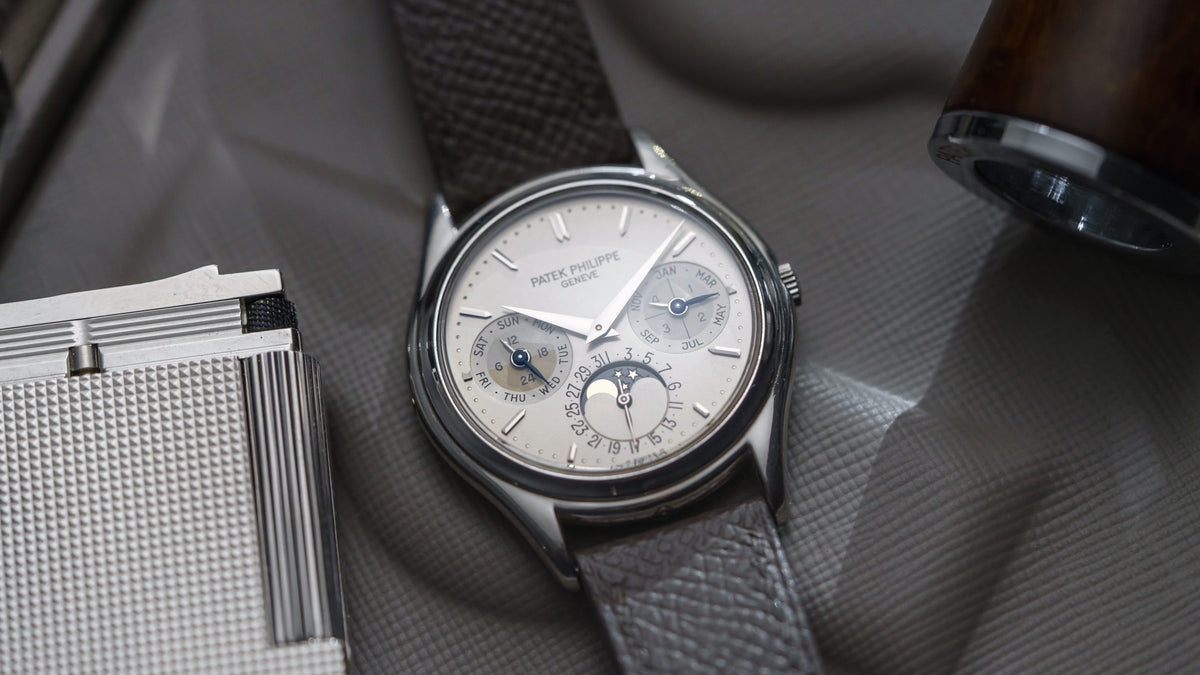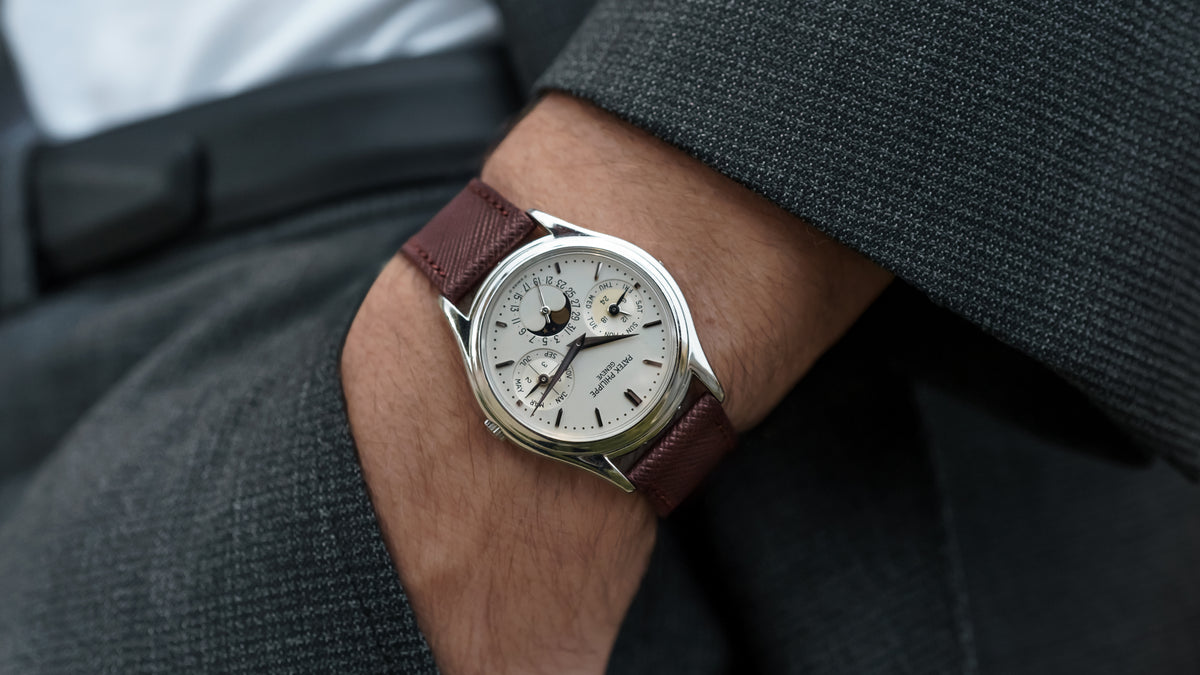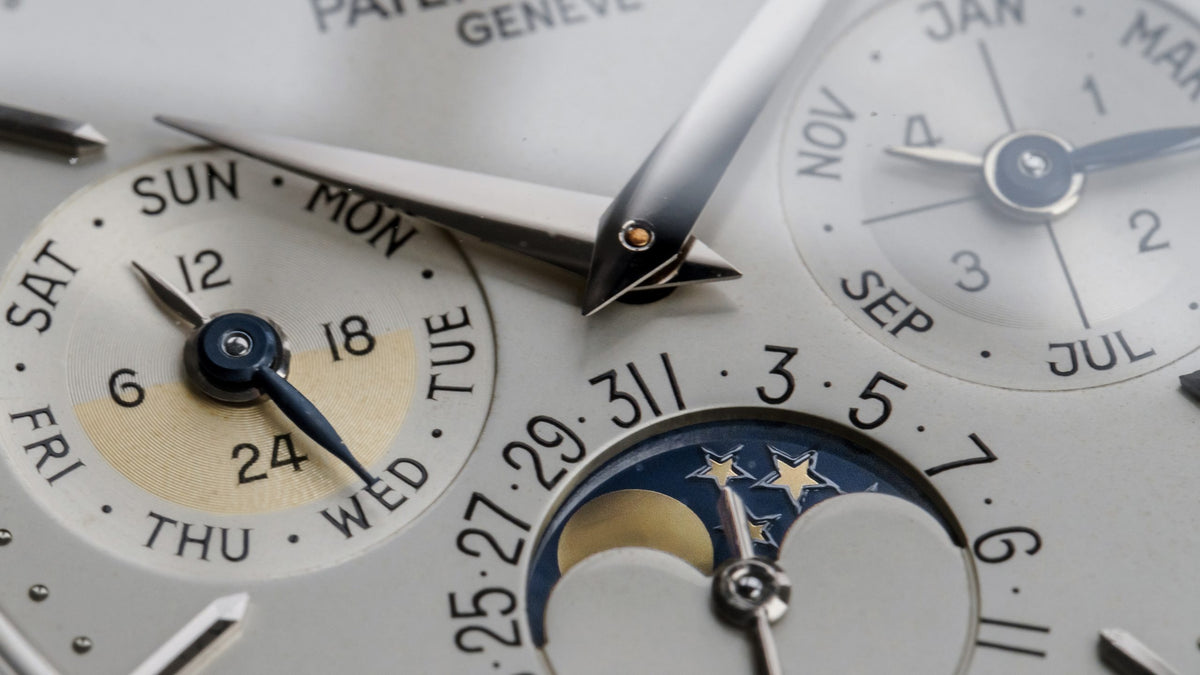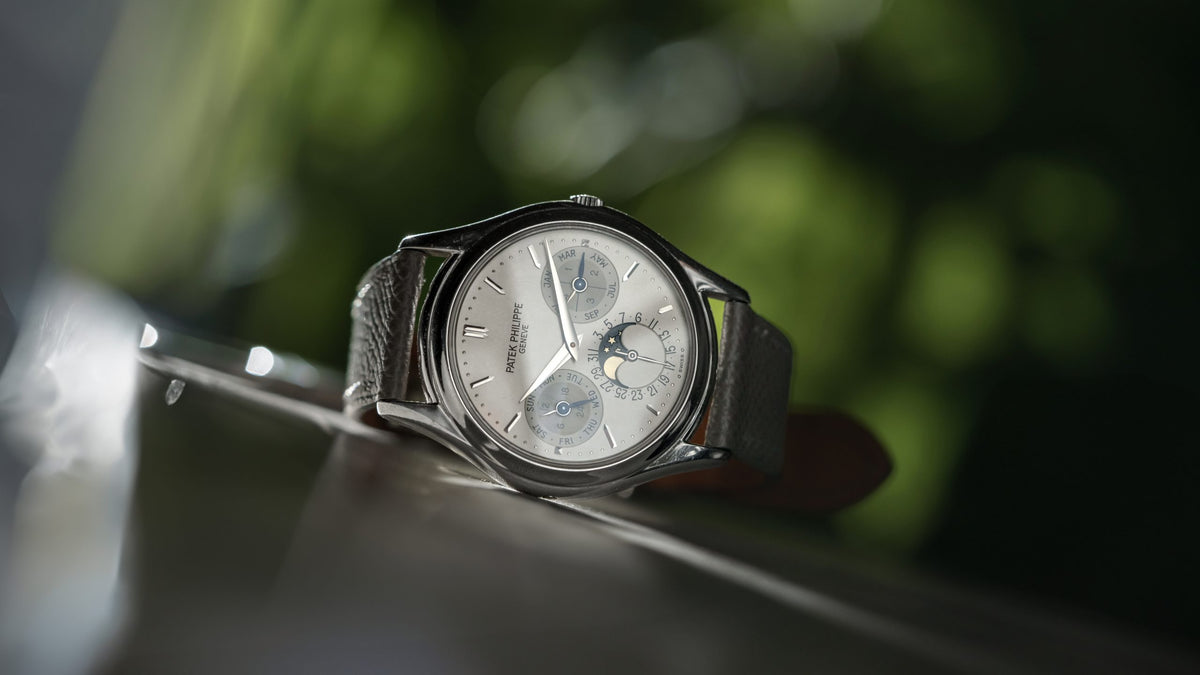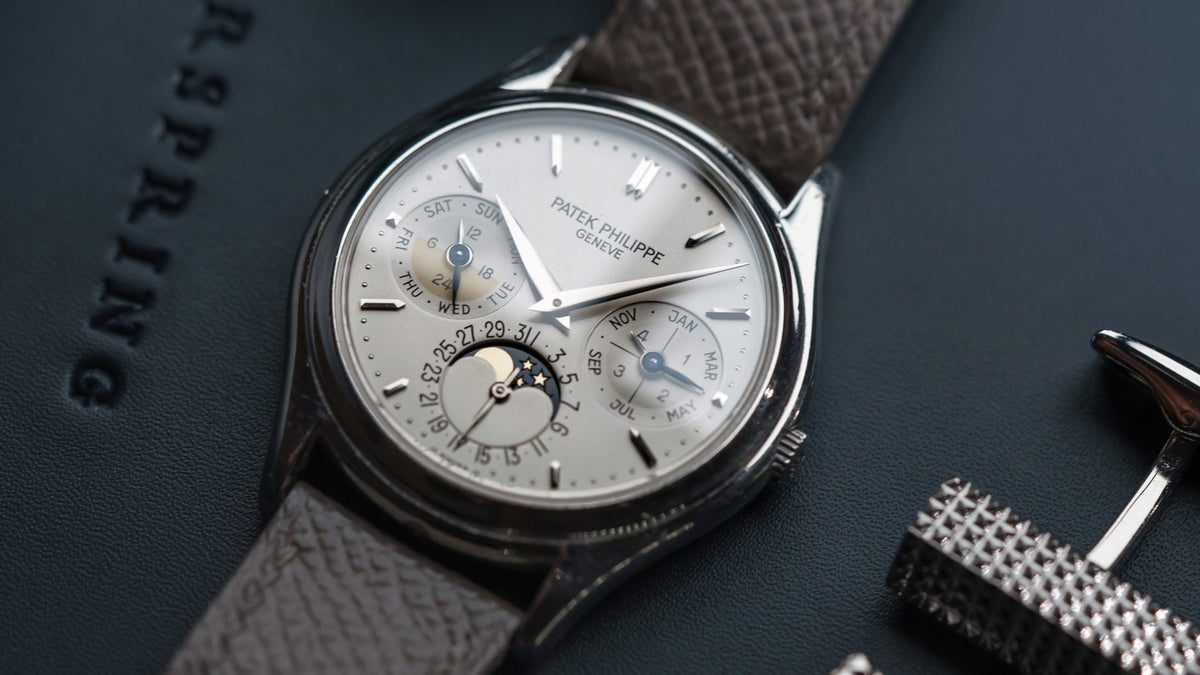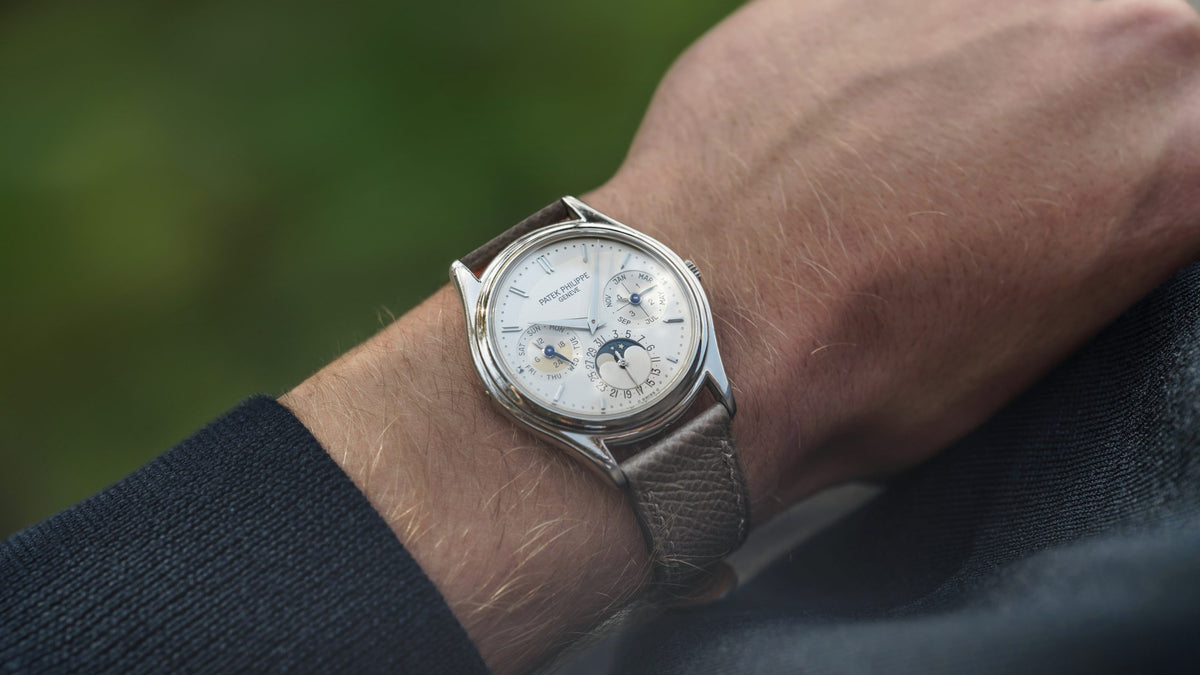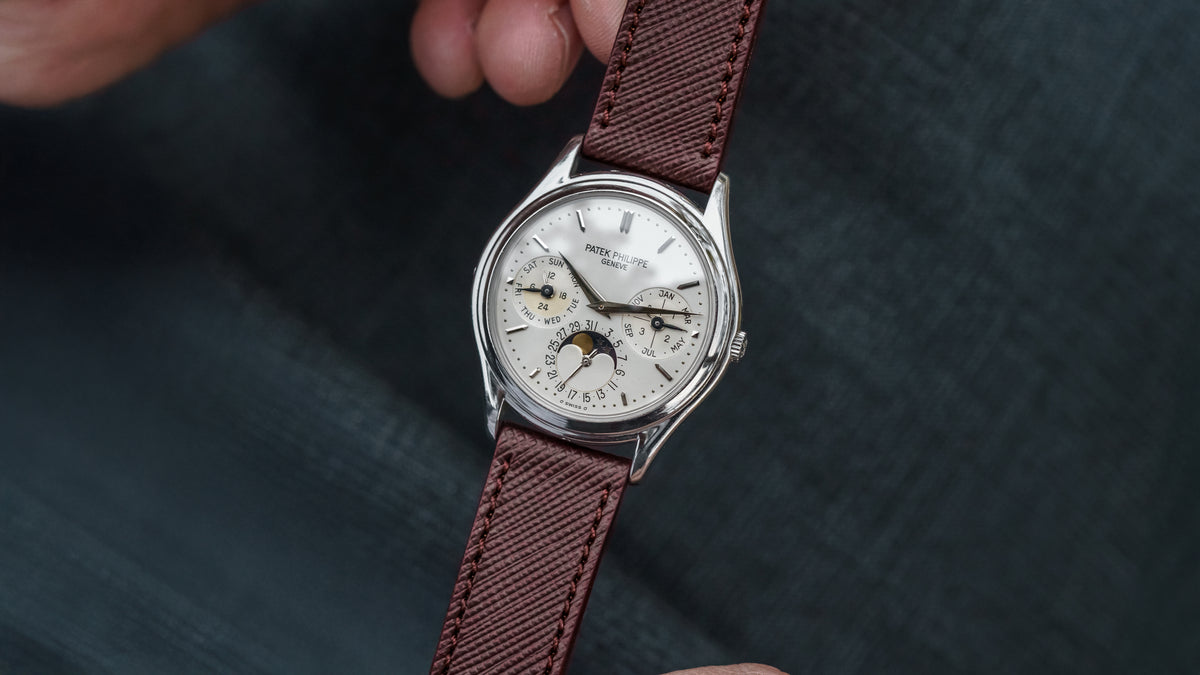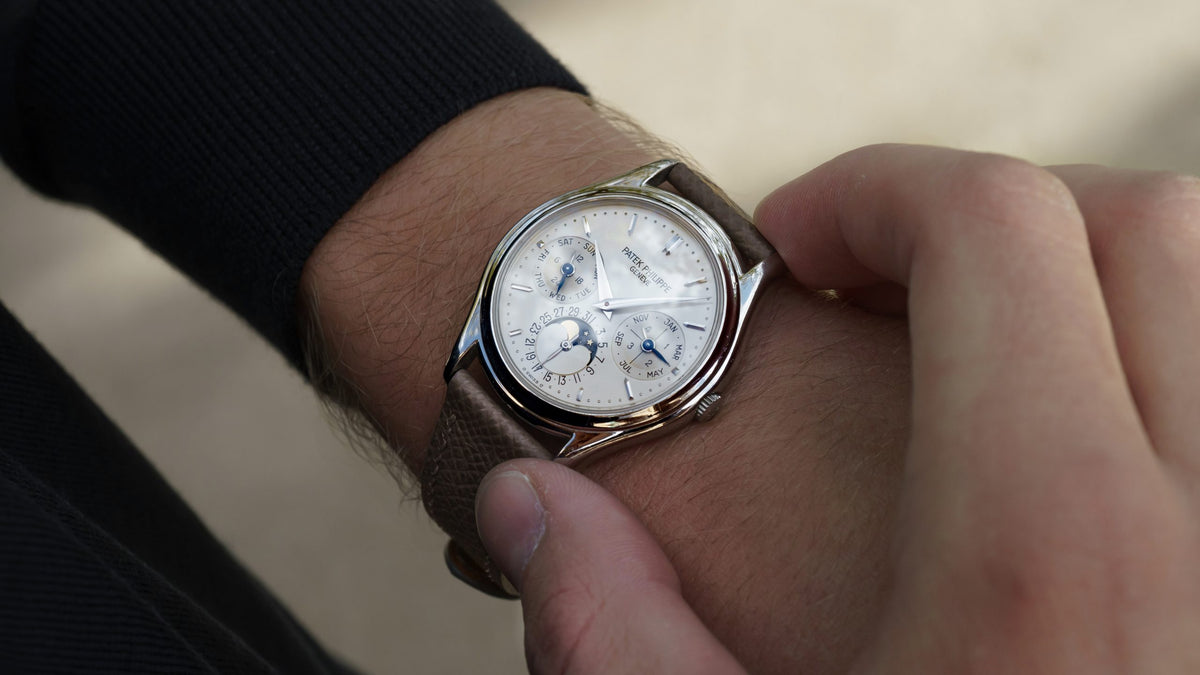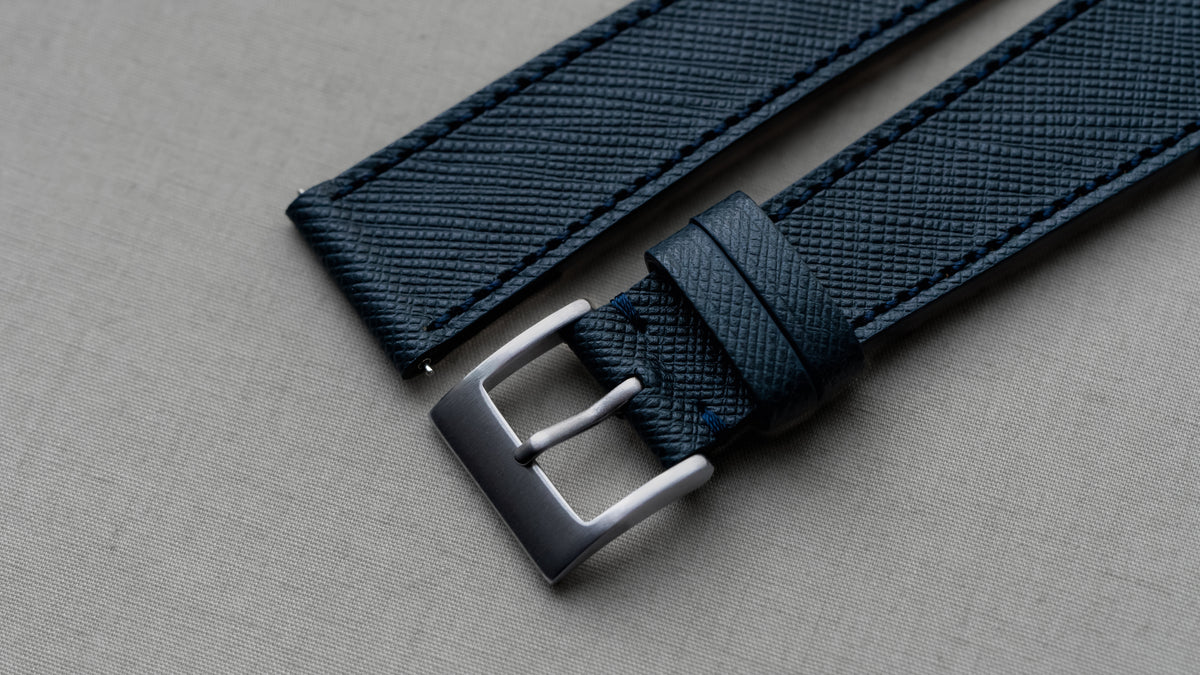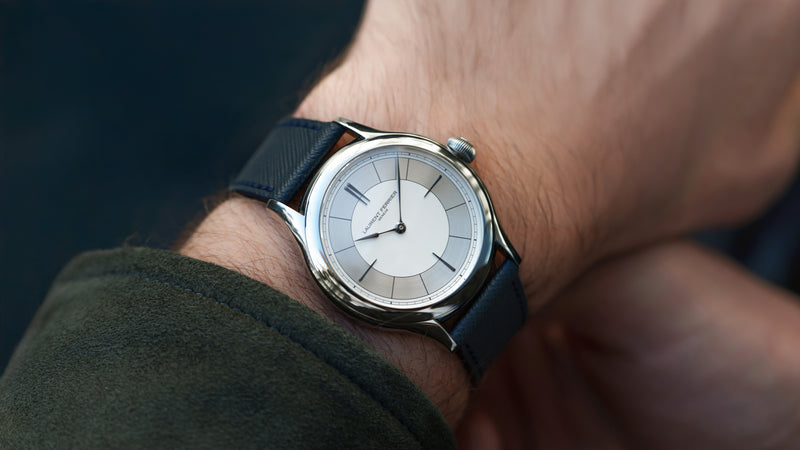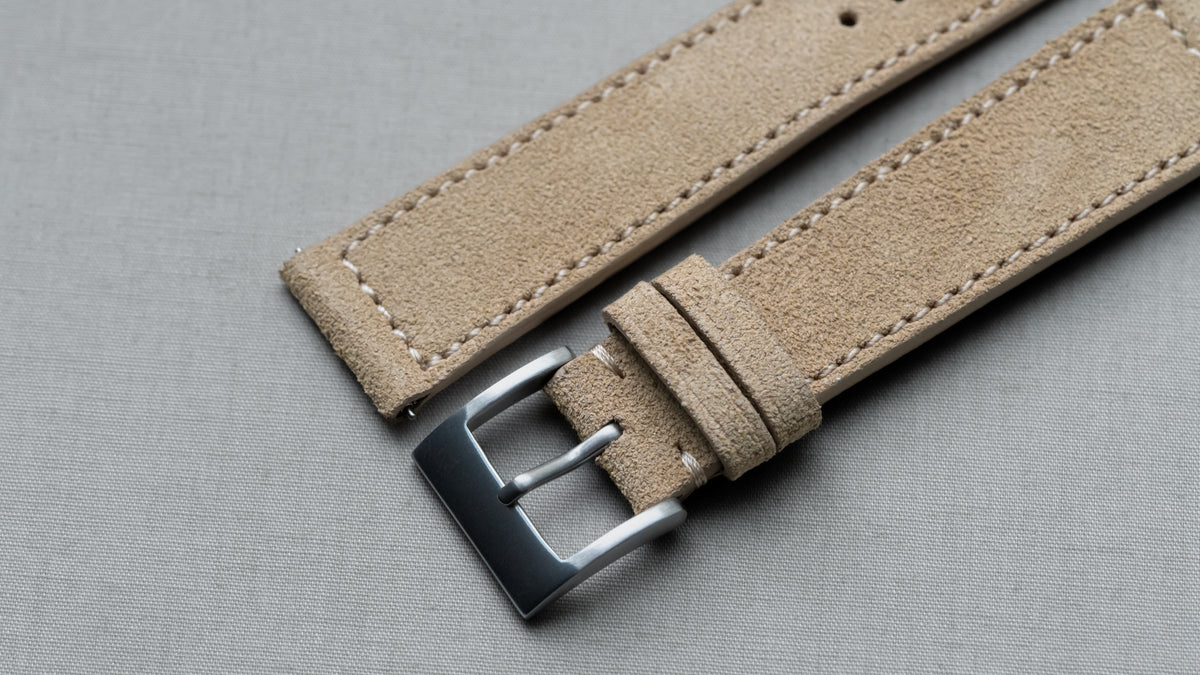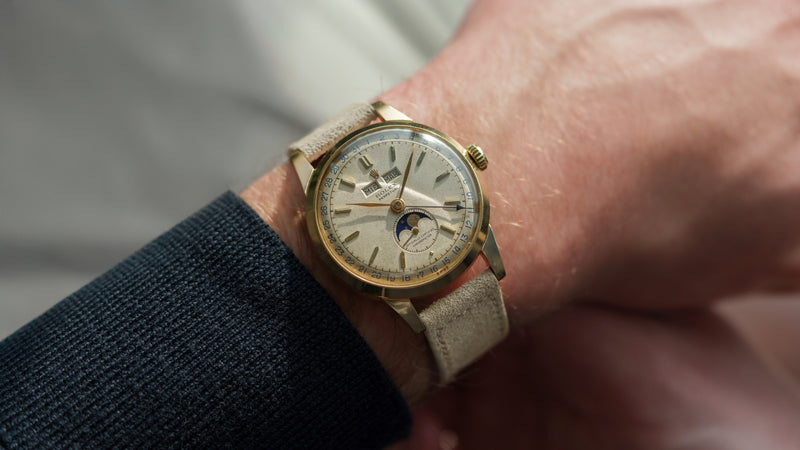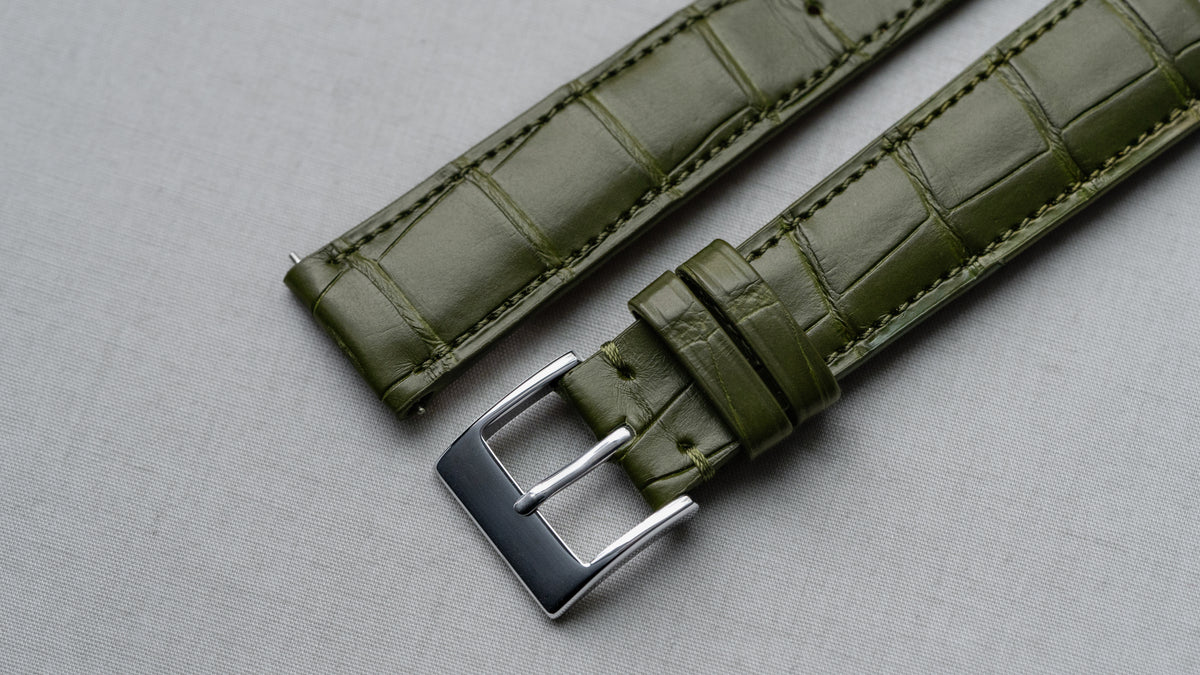3940P, Perpetual Calendar, Second Series, Platinum
A late second series ref. 3940 in platinum. The first Patek Philippe Perpetual Calendar made at scale, the 3940 is serious complication made simple at 36mm. Its revolutionary micro-rotor calibre 240Q is a masterpiece of micro-engineering, just 3.75mm thin. This late second series features bevelled subdials, a crosshair at 3, case-side hallmarks, and a solid platinum caseback (every other metal used a display caseback in this era while platinum always came with a solid platinum caseback). First and second series involved a much greater degree of handcraft in their dial-making process, as well as smaller overall production. It is estimated that no more than 3500 seconds series examples were made, of which platinum was the least produced by far. Since debut, the 3940 has become the quintessential Perpetual Calendar of the last half-century for collectors.










